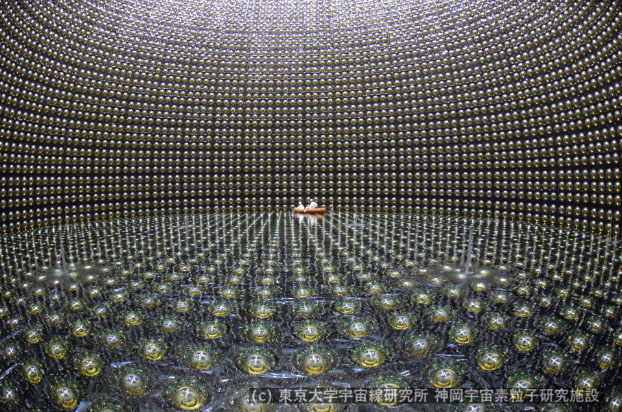Physicists recently reported the first indication of asymmetry in the behaviors of neutrinos and antineutrinos—subatomic particles that have zero electric charge and interact with matter almost entirely through the weak nuclear force. This type of behavior is known as charge-parity (CP) violation. The finding could help solve a fundamental mystery about why matter and antimatter, which mutually annihilate upon contact, could not have formed in equal amounts in the big bang, as prevailing scientific theories have held. See also: Antimatter; Big bang theory; CP symmetry and its violation; Matter; Neutrino

The international T2K (Tokai to Kamioka) Collaboration announced the findings, which are based on data collected since 2014. The T2K experiment—designed to investigate how neutrinos change, or oscillate, from one flavor to another as they travel—involves sending beams of neutrinos and antineutrinos (antimatter doppelgangers of neutrinos) generated at a facility in eastern Japan to the underground Super-Kamiokande detector, located 295 kilometers (183 miles) away in western Japan. Neutrinos are able to easily complete the journey through the solid Earth because these particles barely interact with other matter. For example, a few tens of billions of neutrinos, which are generated inside the Sun, pass right through a human fingernail every second. The Super-Kamiokande detector is able to register faint light flashes, produced by rare interactions between neutrinos and antineutrinos with matter, inside of a sensor-lined, 50,000-gallon tank of ultrapure water. See also: Solar neutrino
Along the way to Super-Kamiokande, neutrinos undergo oscillations, switching among three neutrino flavors: electron neutrino, muon neutrino, and tau neutrino. (Antimatter neutrinos likewise cycle through three corresponding flavors.) Researchers compared how much of each neutrino and antineutrino flavor arrived at Super-Kamiokande to the initial flavor at the generating facility. Neutrinos and antineutrinos turned out not to oscillate in the same way—the first time such asymmetry has been demonstrated in the particle family known as leptons. See also: Lepton; Three neutrino flavors and their mixing
Scientists have previously observed CP violation in quarks, elementary particles that make up basic forms of matter such as protons and neutrons. However, the extent of quark violation documented to date is nowhere near enough to account for the evident large imbalance between matter and antimatter inherently formed during the universe's origin in the big bang 13.8 billion years ago. If, indeed, leptons also exhibit CP violation, then physicists will be significantly closer to accounting for matter's confounding dominance. To date, the statistical significance of the finding is at a three-sigma level, meaning that there is a one-in-1000 chance that the finding is a false positive; physicist rely on a five-sigma (about one in 1 million) threshold for declaring an outright discovery. Continued running of the T2K experiment, as well as future experiments now in development, intend to build on the potential milestone’s statistical significance. See also: Cosmology; Neutron; Physics; Proton; Quark; Statistics





